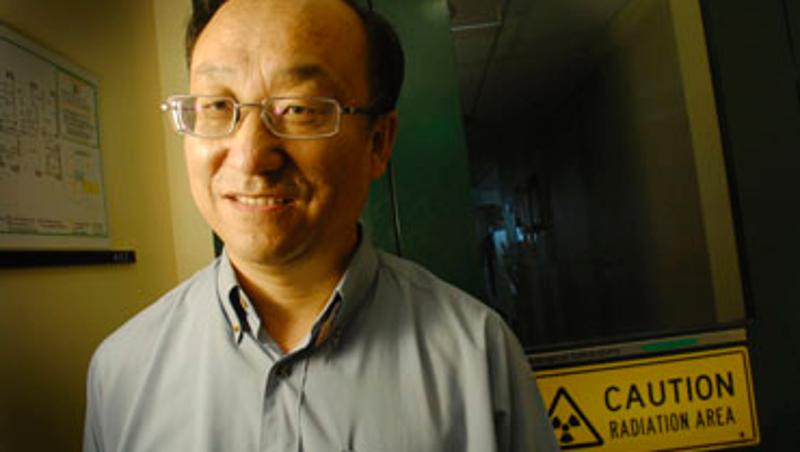
Radioactive waste, the inevitable by-product of nuclear energy, may no longer be dangerous to store, thanks to a team of Queensland University of Technology academics.
The team, led by Associate Professor Zhu Huai Yong from the School of Physical and Chemical Sciences, has created a material that has the potential to filter and safely lock away radioactive ions from waste water.
Professor Zhu said effective measures to prevent radioactive contamination of the environment were greatly needed, as the world increased its reliance on nuclear energy.
"You have to keep nuclear waste somewhere for hundreds of years," he said.
"Water is used to cool nuclear reactors and during the mining and purification of nuclear material, so waste water is a big problem. For example, there is a lake in the United States filled with millions of gallons of nuclear waste water.
"However, if waste is stored conventionally in lakes or steel containers, it may leak and pollute the land around it."
Professor Zhu said the team had discovered how to create nanofibres that were mere millionths of a millimetre in size and could permanently lock away radioactive ions by displacing the existing sodium ions in the fibre.
"We have created ceramic nanofibres which attract and trap radioactive cations, possibly for ever," he said.
"The ceramic material can last a very long time, much longer than the radioactivity of a radioactive ion. Ceramic is more chemically stable than metal and can last much longer, and therefore can be a better material for storage. It's also much cheaper to make than steel."
Professor Zhu said the ceramic nanofibres were made from titanium dioxide, a mineral found abundantly in Australia and used to colour white paint, which is mixed with caustic soda and heated in a laboratory oven.
"The nano fibres, which are about several to 40 micrometres in length, look like white powder to the human eye," he said.
"The fibres are in very thin layers, less than one nanometre in width, and the radioactive ions are attracted into the space between the layers.
"Once the ceramic material absorbs a certain amount, the layers collapse to lock the radioactive ions inside."
Media contact: Rachael Wilson, QUT media officer, 07 3138 1150 or rachael.wilson@qut.edu.au.
**High res image available


